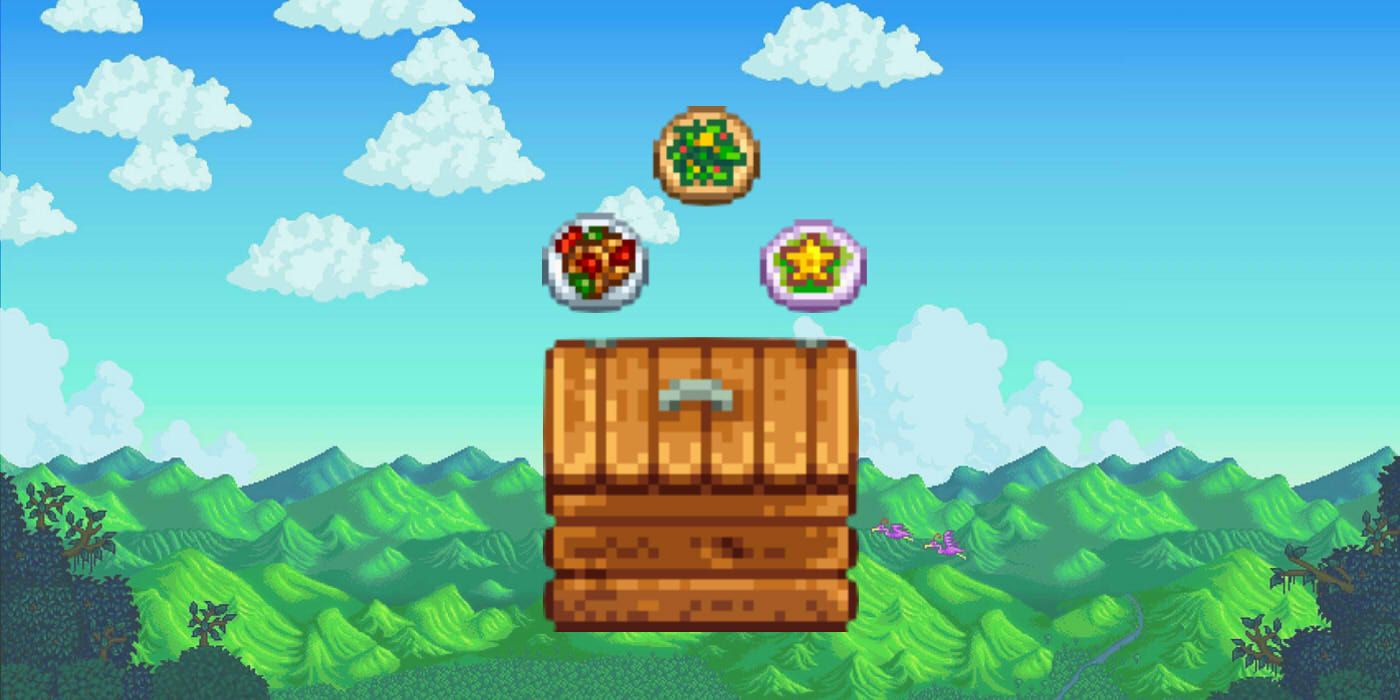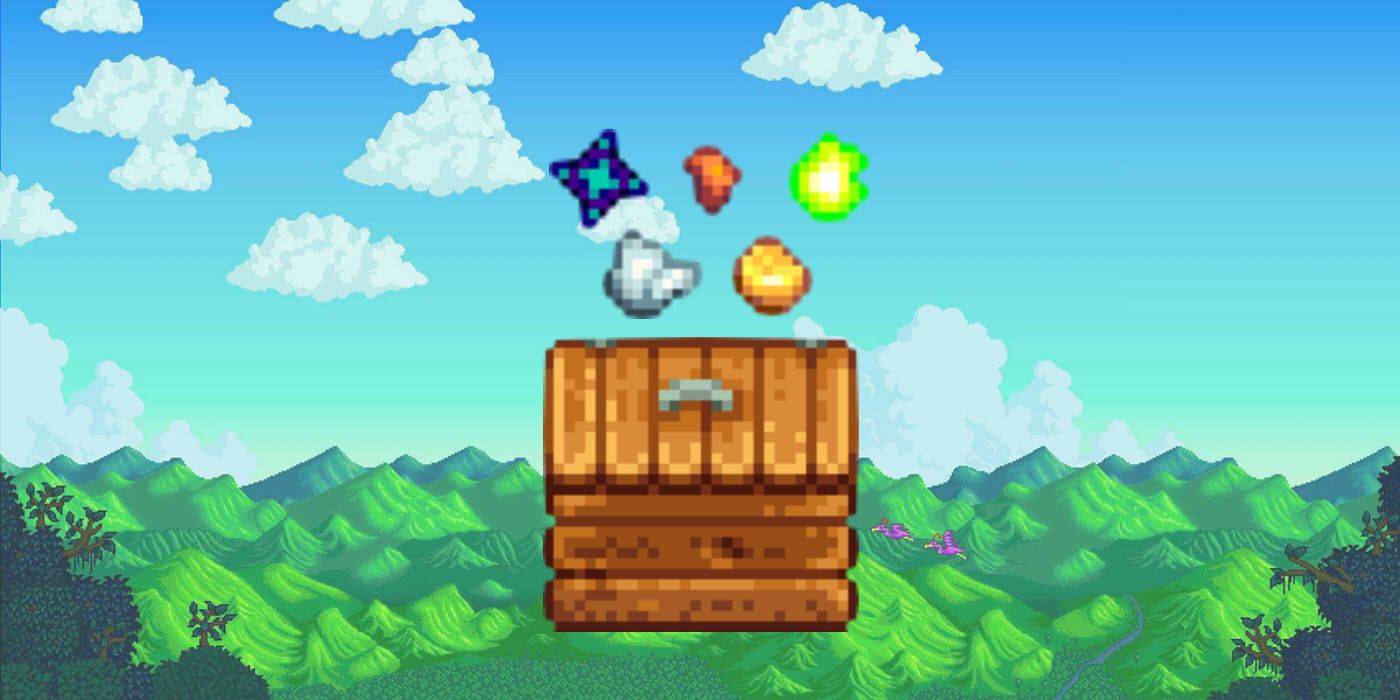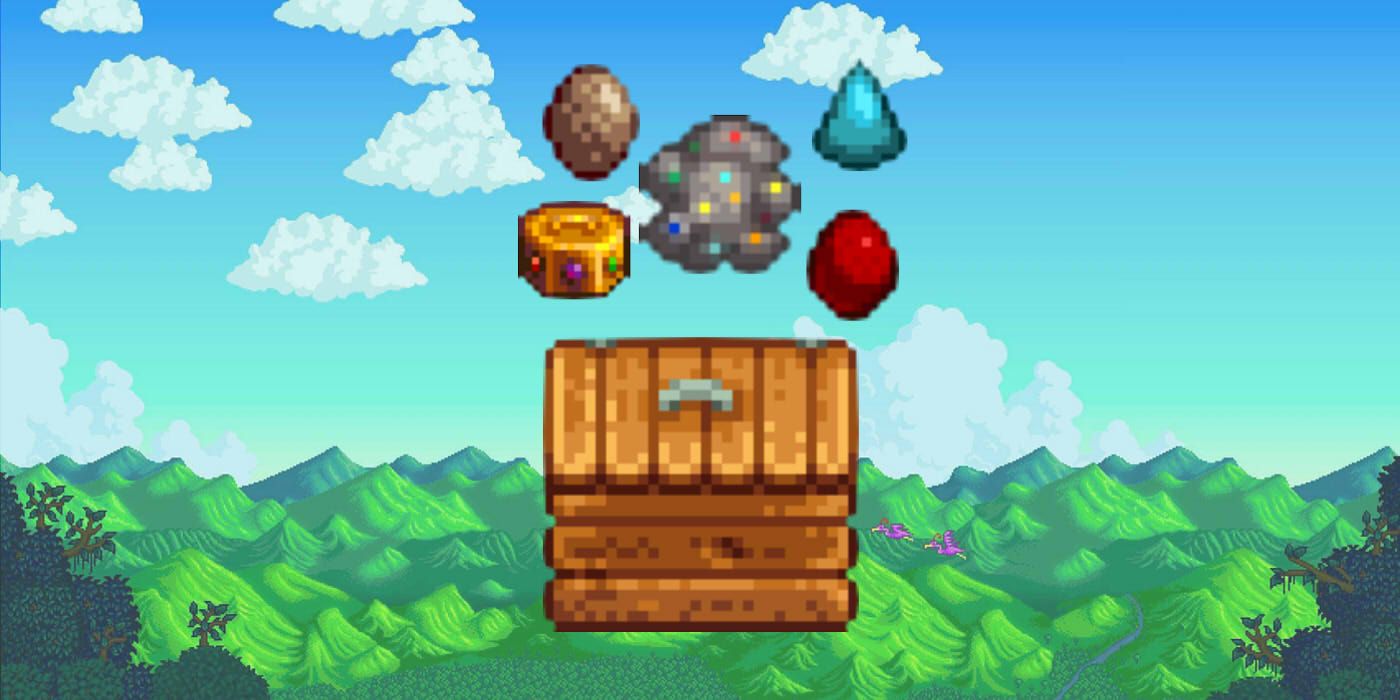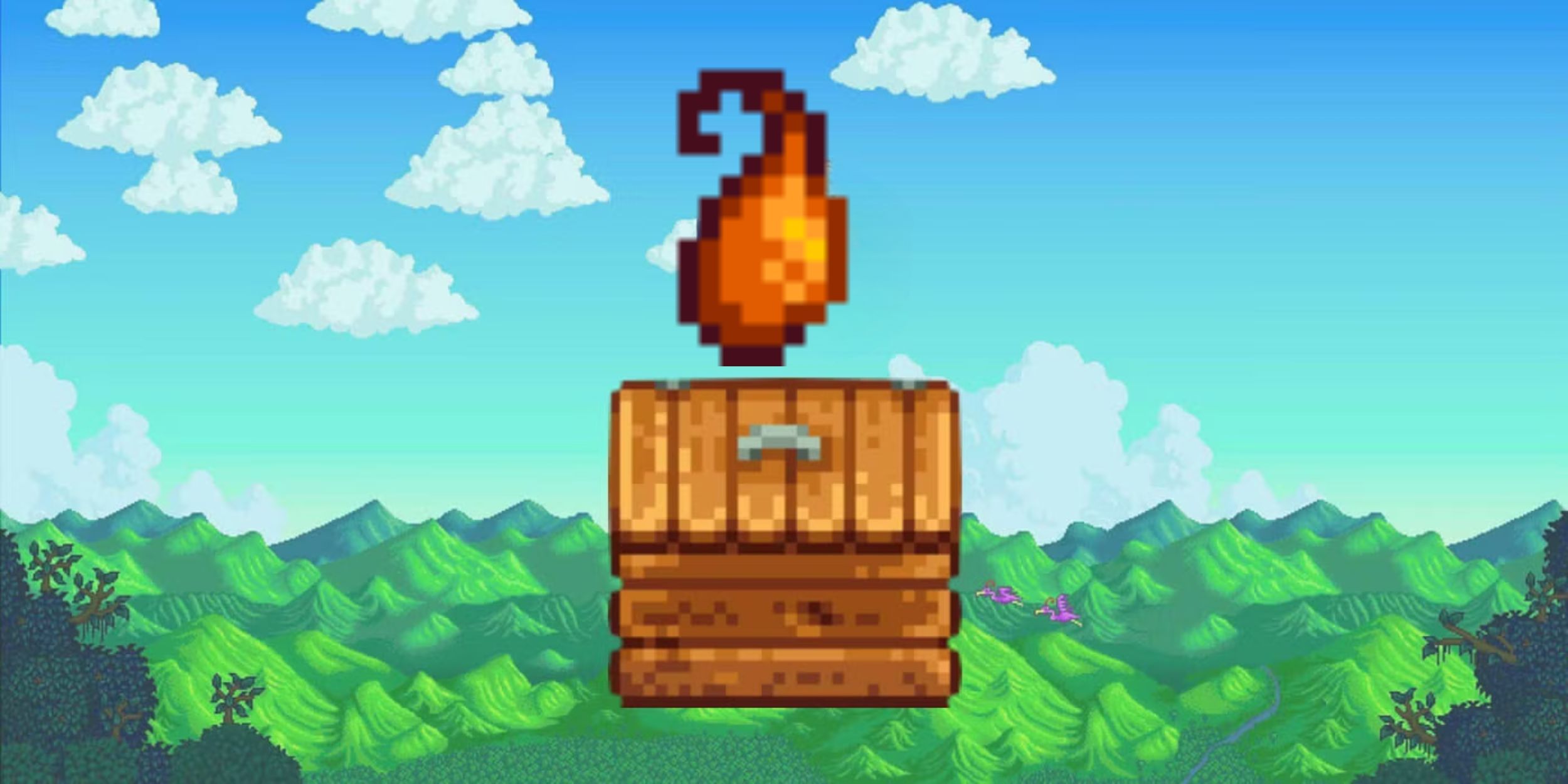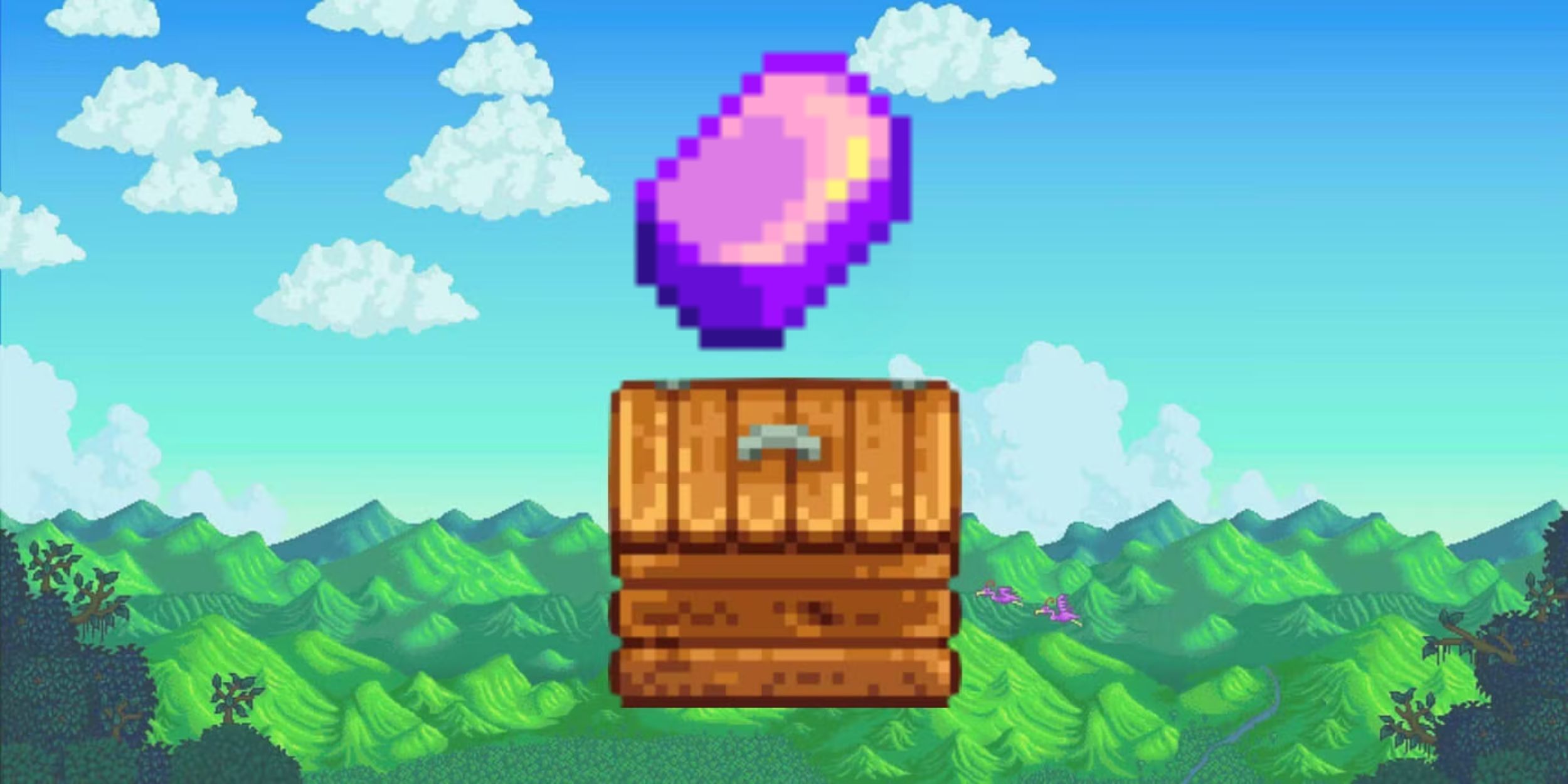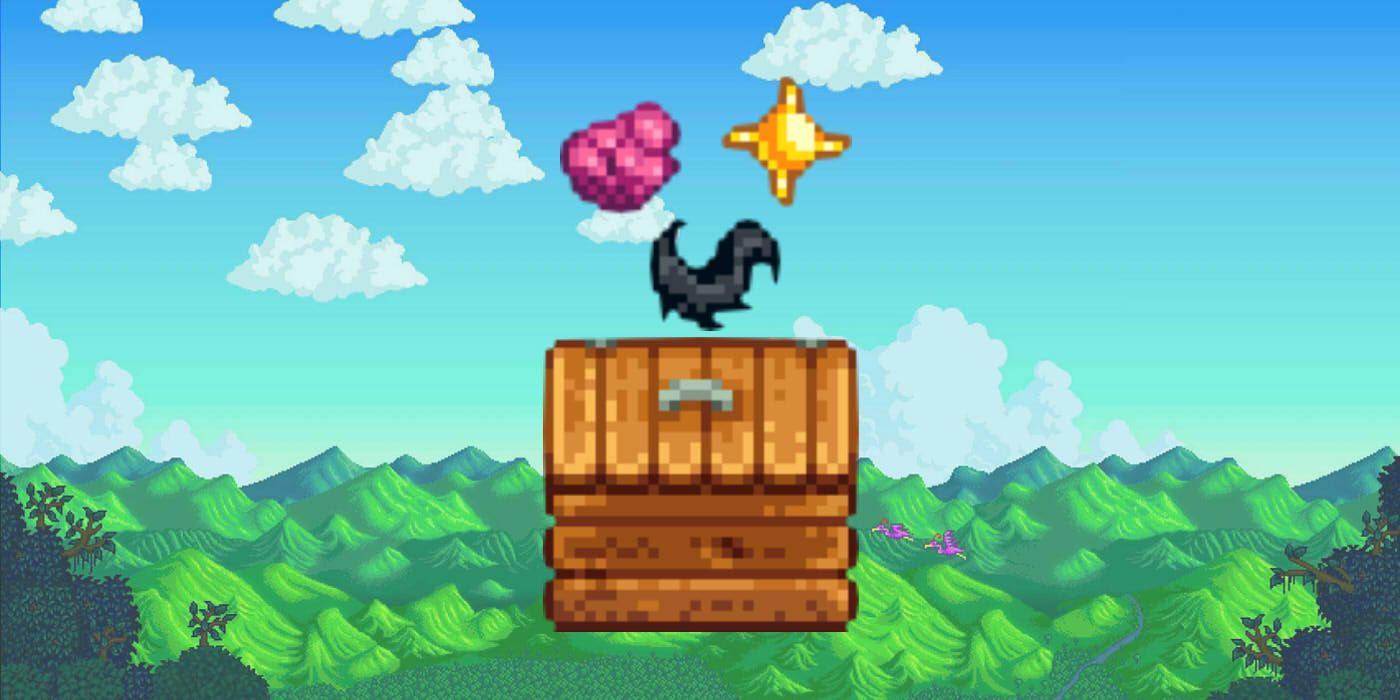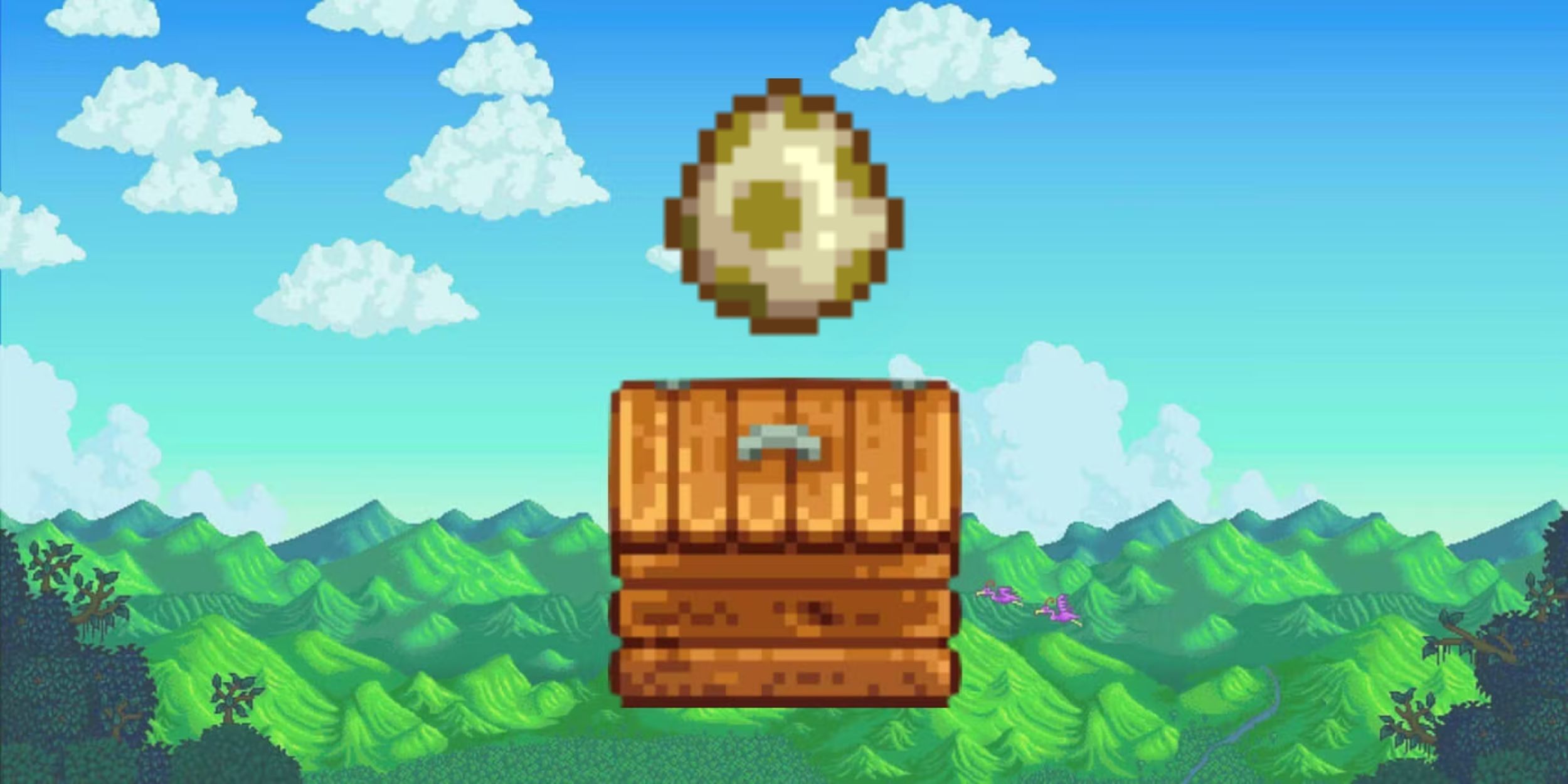Games
Stardew Valley: Things You Should Never Sell

Key Takeaways
Table of Contents
- Save building materials like wood and stone for crafting rather than selling for quick cash in
Stardew Valley. - Cooked meals may not be profitable, but they make great gifts and health items for mining in the game.
- Keep ore, geodes, raw ingredients, and monster loot for crafting valuable items rather than selling them off.
Stardew Valley is one of the most successful indie games of the last decade, often regarded as the ultimate cozy farming sim. It has a plethora of activities to keep players engaged, from farming to foraging to mining and more. With so much to do, players will quickly find their pockets filled with more stuff than they know what to do with.
Related
Despite Being a New World, Haunted Chocolatier Should Carry Over One Enigmatic Stardew NPC
While Haunted Chocolatier is set in a different world than Stardew Valley, one mysterious, magical NPC could appear in ConcernedApe’s upcoming game.
So, what should players do with all their hard-earned spoils? Plopping them all in the Shipping Bin at the end of a long day seems like the obvious solution. However, an item’s worth in Stardew Valley is not always measured in gold. Here are some that should never be sold, and can be put to better use.
Updated October 26, 2024, by Usama Ali: While dumping things into Stardew Valley’s Shipping Bin and selling them can be a quick way to get cash, sometimes it’s better to hold onto them. Players can process animal products and crops into higher-value products, such as wine and cheese, and sell them at a higher profit. Similarly, everyday items like building materials and some forageables should never be sold because they can be put to better use. This list has been updated to include more items that you should never sell in Stardew Valley.
11 Building Materials
The Early-Game Cash Grab Just Isn’t Worth It
In that first Spring, players will spend a good deal of time clearing their farmland while waiting for their first batch of crops to grow. In that time, they’ll collect plenty of Wood, Stone, and Fibres. It can be very tempting to immediately sell off those materials for some quick cash, but it’s best to craft a Chest and store them.
The need for building materials ramps up very quickly. Wood and Stone are expensive, and things like Fibres and  Hardwood can’t be bought at all. So keep those materials around, and stick to foraging for easy money.
Hardwood can’t be bought at all. So keep those materials around, and stick to foraging for easy money.
10 Cooked Meals
Great For Gifts Or Energy Refills, But Terrible For Profits
In Stardew Valley, cooking is not a profitable pastime. The fixed selling price of each meal is always less than the sum of its parts (i.e. ingredients). Most players only use their kitchens for purposes of cooking one of every recipe, or to load up on health items for mining.
Cooked meals also make for some of the best gifts for the local townsfolk. Everyone’s got a favorite dish, after all. Giving food away may not be a sound way to recoup the money lost on procuring ingredients, but leveling up a friendship is its own reward.
9 Ore
Made For The Forge, Not For The Shipping Bin
After a long hard day’s work in The Mines, the last thing players want is to waste all their efforts on meager profits. Mining is one of the most lucrative practices in the game, and turning ore into bars is a huge part of that.
Unlike with cooking, smelted items are always worth more than their base components. Even if players don’t have the five ore or coal necessary to put in the furnace right away, it’s best to keep them in a chest for later.
8 Geodes
The Real Money-Makers Are Hidden Within
Geodes are super valuable, just not in and of themselves. Each one contains a little goodie, be it a rare mineral, gems, or other resources. Clint the Blacksmith can open each one for 25g, so taking a bunch over on a lucky day is a great way to make some money or fill up the local library.
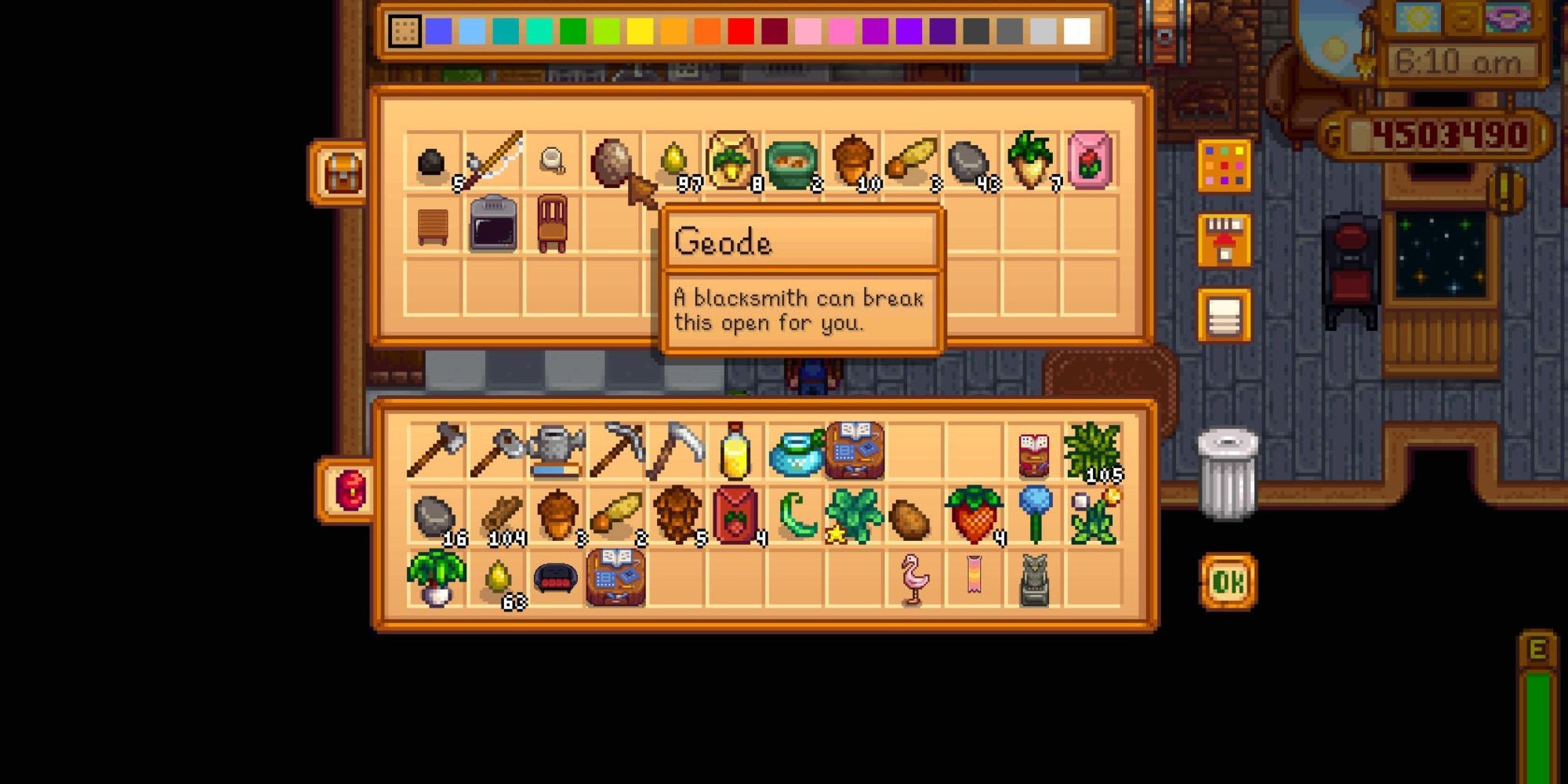
Related
Stardew Valley: How to Get Geodes
Unearth various kinds of geodes in Stardew Valley to collect rare treasures and valuable resources.
Keep in mind, though, not everything that comes out of a  Geode is worth a lot. Some items don’t even cover Clint’s fee, but overall, the gamble is always worth more than selling the Geodes straight out.
Geode is worth a lot. Some items don’t even cover Clint’s fee, but overall, the gamble is always worth more than selling the Geodes straight out.
7 Raw Ingredients
If It Ain’t Artisanal, It Ain’t Profitable
As players level up their farming, they’ll learn how to craft several maker items that turn regular items into artisanal goods that they can sell for a fortune. Preserves jars, kegs, casks, and the newly-added dehydrator from the 1.6 update all take profits from crops to the next level.
The name of the game here is star quality. Artisanal goods don’t have star qualities (except for wine aged via casks), so any crops that are silver or gold-star quality can go straight in the Shipping Bin. The run-of-the-mill low-quality stuff is another story.
6 Winter Root
There’s More To This Starchy Root
While many players tend to neglect farming during Winter in Stardew Valley, it can actually be a profitable time to focus on it, especially if you use Winter Roots. Winter Roots are common forageables during Winter. It may be tempting to sell Winter Root for quick bucks, but there’s a better way to maximize your Winter profits.
Instead of selling Winter Roots directly, consider using them in a  Seed Maker to craft Winter Seeds. Players can plant Winter Seeds to get special Winter crops, namely Crocus, Crystal Fruit, Snow Yam, and Winter Root. These crops can then be sold for decent prices to generate income from the farm even during the typically slower Winter season.
Seed Maker to craft Winter Seeds. Players can plant Winter Seeds to get special Winter crops, namely Crocus, Crystal Fruit, Snow Yam, and Winter Root. These crops can then be sold for decent prices to generate income from the farm even during the typically slower Winter season.
5 Bone Fragments And Bone Items
Their Only Worth Is As Mulch
It’s unclear who goes around buying bones anyway, which might be why they don’t sell for much. Artifacts as a whole sell for way less than gems and minerals, but after they’re donated, there’s not much else to do with them, but bones are different.
After completing Gunther’s “Fragments of the Past” special order, players unlock the ability to craft the Bone Mill. Simply load in some Bone Fragments (or other bone-related items), wait a bit, and get some fertilizer! It’s way more cost-efficient than buying it from Pierre’s.
4 Iridium Bar
Resist The Urge To Sell These Bars of Pure Iridium
Those shiny  Iridium Bar are worth a lot of money, easily fetching a cool 1,000 gold. In fact, players with the Blacksmith Profession can sell them for 1,500 gold – making it hard to resist the temptation to sell them. While they’re certainly valuable, there’s a much better way to use Iridium Bars.
Iridium Bar are worth a lot of money, easily fetching a cool 1,000 gold. In fact, players with the Blacksmith Profession can sell them for 1,500 gold – making it hard to resist the temptation to sell them. While they’re certainly valuable, there’s a much better way to use Iridium Bars.
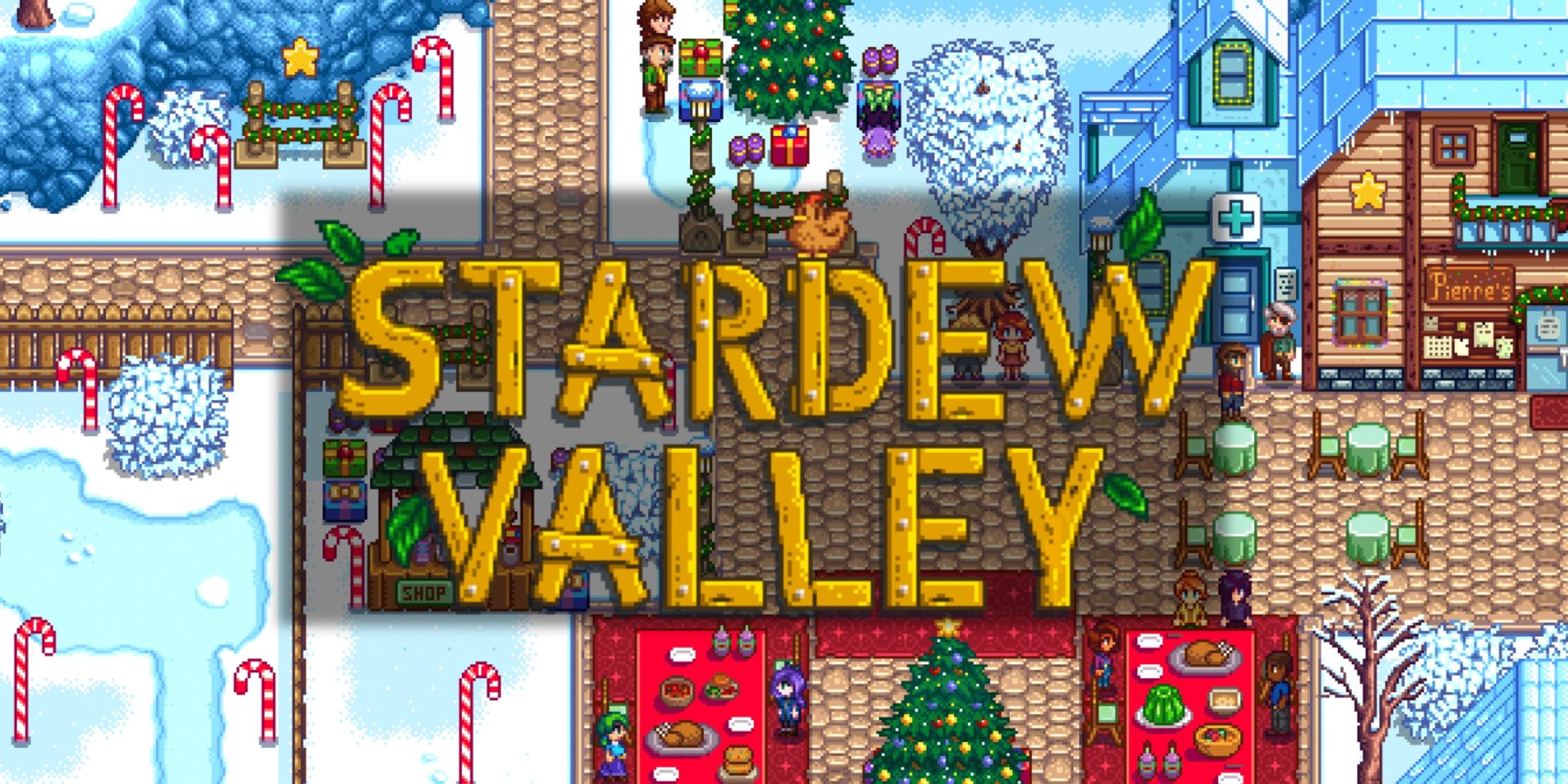
Related
Stardew Valley: Best Feast Of The Winter Star Gifts To Receive
These are the best gifts to receive based on how much they sell for and how useful they are to players.
Iridium Bars are a rare and precious resource, essential for crafting advanced machinery and tools. However, they’re also a key ingredient for creating Crystalariums in Stardew Valley. Crystalariums are magical machines that can replicate any gem inserted in them an infinite number of times until removed. Diamonds are the most profitable gem to replicate, yielding a profit of 150 gold per day. So, instead of immediately selling your Iridium Bars, consider investing in a few  Crystalarium. This long-term strategy will yield far greater rewards than a one-time sale.
Crystalarium. This long-term strategy will yield far greater rewards than a one-time sale.
3 Monster Loot
There’s Just No Market For Adventurers Anymore
Similar to artifacts, monster loot just doesn’t sell for very much. After all, the real profit in mining is the ore and minerals; monsters are just an obstacle. They’re not worthless, per se. They can help pay for that shiny new sword in the Adventurer’s Guild, but there’s a smarter way to put that loot to good use.
Monster loot is used a lot in higher-level crafting, so it’s good to stock up on them instead of selling them off. Slime makes Oil Makers. Void and Solar Essences create powerful bombs.  Bug Meat is essential for bait, and Bat Wings create Lightning Rods to create Battery Packs.
Bug Meat is essential for bait, and Bat Wings create Lightning Rods to create Battery Packs.
2 Dinosaur Eggs
Save The First Dino Egg
 Dinosaur Egg is both a rare artifact and a valuable animal product in Stardew Valley. Players are likely to get their first dino egg while digging up Artifact Spots in The Mountains and Quarry. Before players rush to sell their first hard-earned Dinosaur Egg for a few hundred gold, they should consider hatching it. When placed inside an incubator, the Dinosaur Egg will hatch into a dinosaur. A mature and well-fed dinosaur produces Dinosaur Eggs every seven days.
Dinosaur Egg is both a rare artifact and a valuable animal product in Stardew Valley. Players are likely to get their first dino egg while digging up Artifact Spots in The Mountains and Quarry. Before players rush to sell their first hard-earned Dinosaur Egg for a few hundred gold, they should consider hatching it. When placed inside an incubator, the Dinosaur Egg will hatch into a dinosaur. A mature and well-fed dinosaur produces Dinosaur Eggs every seven days.
Having a dinosaur means you’ll have a constant supply of dinosaur eggs. Players can then choose to sell these eggs for a good profit or use them to make  Dinosaur Mayonnaise, which sells for 800 gold. Since Dinosaur Eggs are relatively rare, if they miss the chance to incubate the first one, players will have to wait a long time to get another.
Dinosaur Mayonnaise, which sells for 800 gold. Since Dinosaur Eggs are relatively rare, if they miss the chance to incubate the first one, players will have to wait a long time to get another.
1 Prismatic Shards
Their Other Uses Vastly Outweigh Their Price Tag
“Never sell Prismatic Shards” feels a bit strong. “Not yet” feels more accurate. At 2,000g, these babies are one of the highest-selling items in Stardew Valley. They’re also incredibly useful, so it’s important to have one’s priorities in order.
The first Prismatic Shard obtained should always be used to obtain the  Galaxy Sword in Calico Desert. The rest ought to be donated to Gunther, given to the Missing Bundle, or used to enchant tools in the Forge on Ginger Island. Players will have use for about nine Prismatic Shards before they should even think about selling one.
Galaxy Sword in Calico Desert. The rest ought to be donated to Gunther, given to the Missing Bundle, or used to enchant tools in the Forge on Ginger Island. Players will have use for about nine Prismatic Shards before they should even think about selling one.
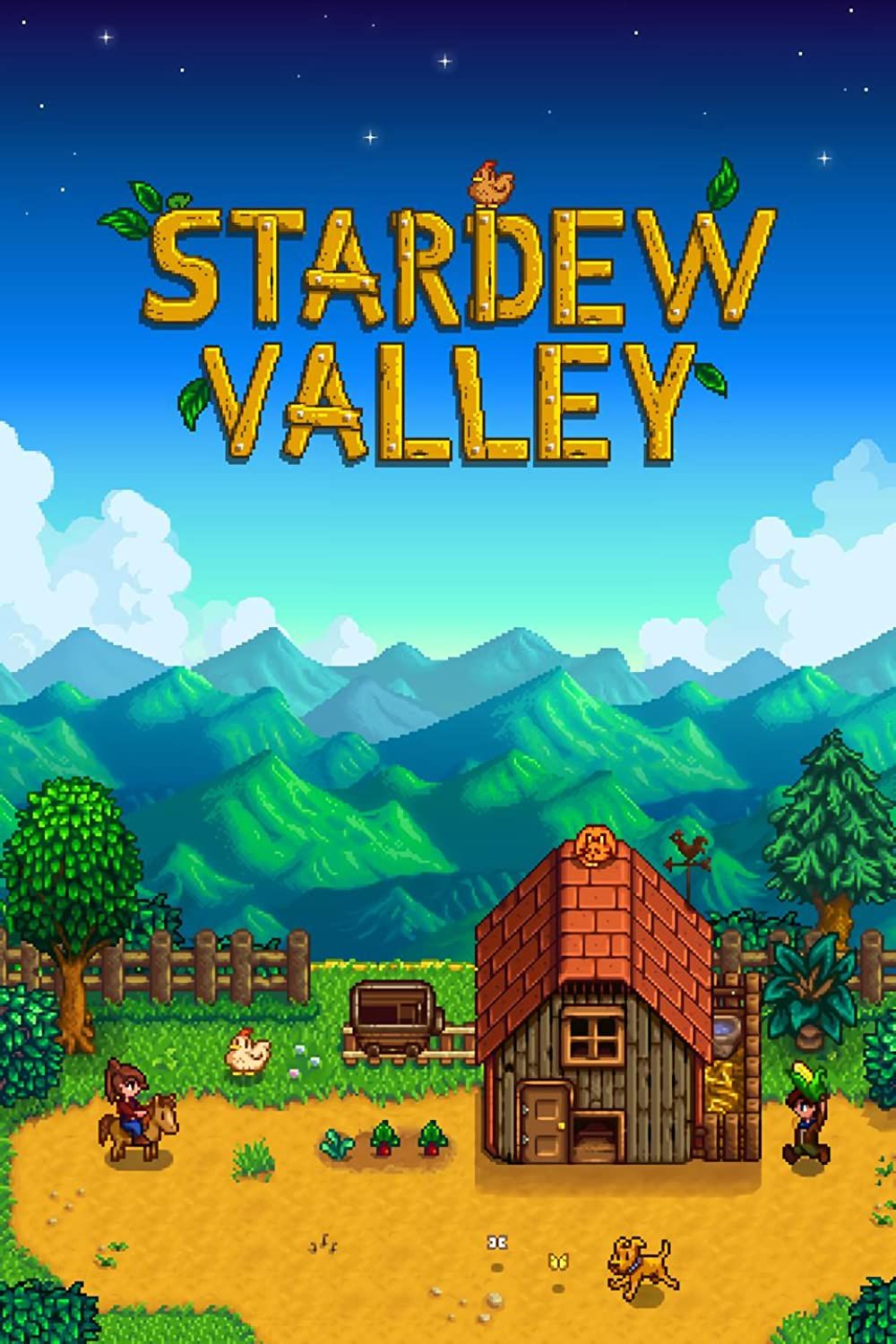
- Released
- February 26, 2016
- Developer(s)
- ConcernedApe
-

 What To Watch4 weeks ago
What To Watch4 weeks agoVenom 3 Ending, Post Credits Scenes Explained: Who Is Knull?
-

 What To Watch3 weeks ago
What To Watch3 weeks agoA Haunting Meta Doc About Ukraine’s Invasion
-

 What To Watch3 weeks ago
What To Watch3 weeks agoNvidia Replaces Intel on Dow Jones Industrial Average
-

 Tech3 weeks ago
Tech3 weeks agoAutumn Internationals 2024 live stream: how to watch rugby union
-

 Entertainment4 weeks ago
Entertainment4 weeks agoM4 Mac mini vs. M2 Mac mini: What are the differences?
-

 What To Watch3 weeks ago
What To Watch3 weeks agoHow Lone Justice Came Together to Create First ‘New’ Album in 38 Years
-

 Tech4 weeks ago
Tech4 weeks agoThe OnePlus 13 camera specs are confirmed – and we’ve got the first camera samples too
-

 Entertainment3 weeks ago
Entertainment3 weeks agoHalloween 2024: Weekend debates, obscure memes, and a legacy of racism


